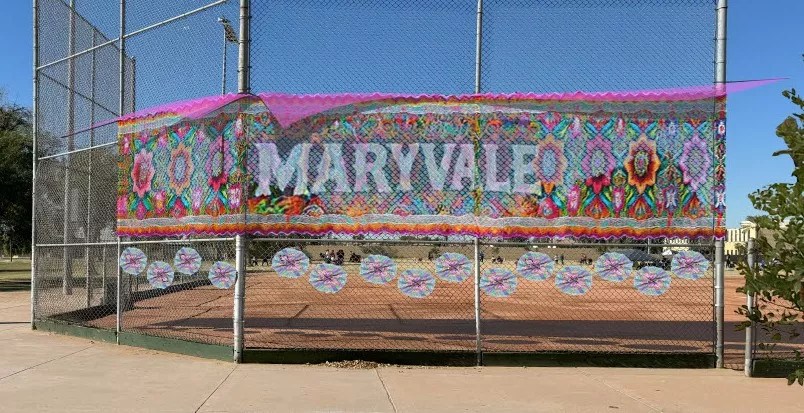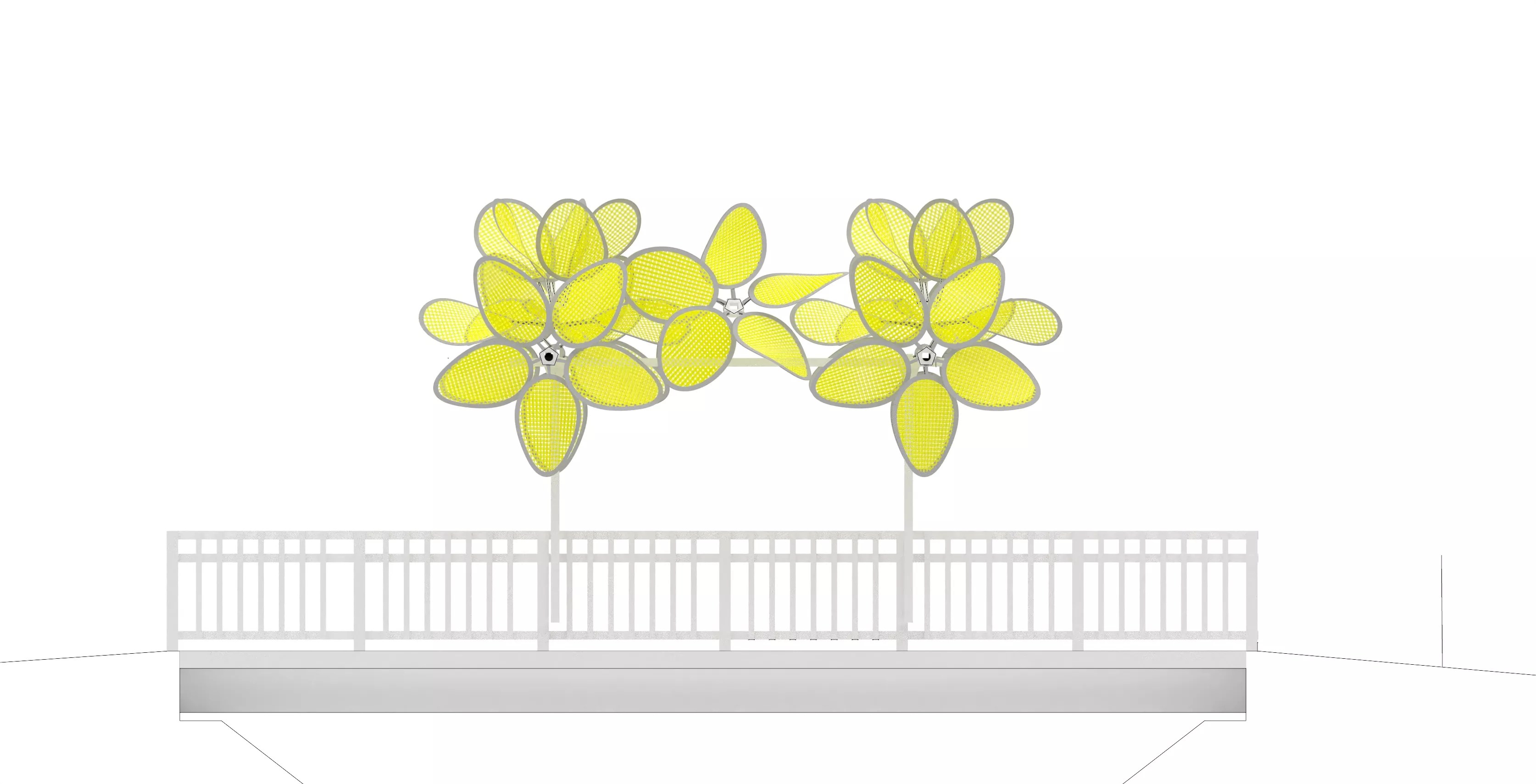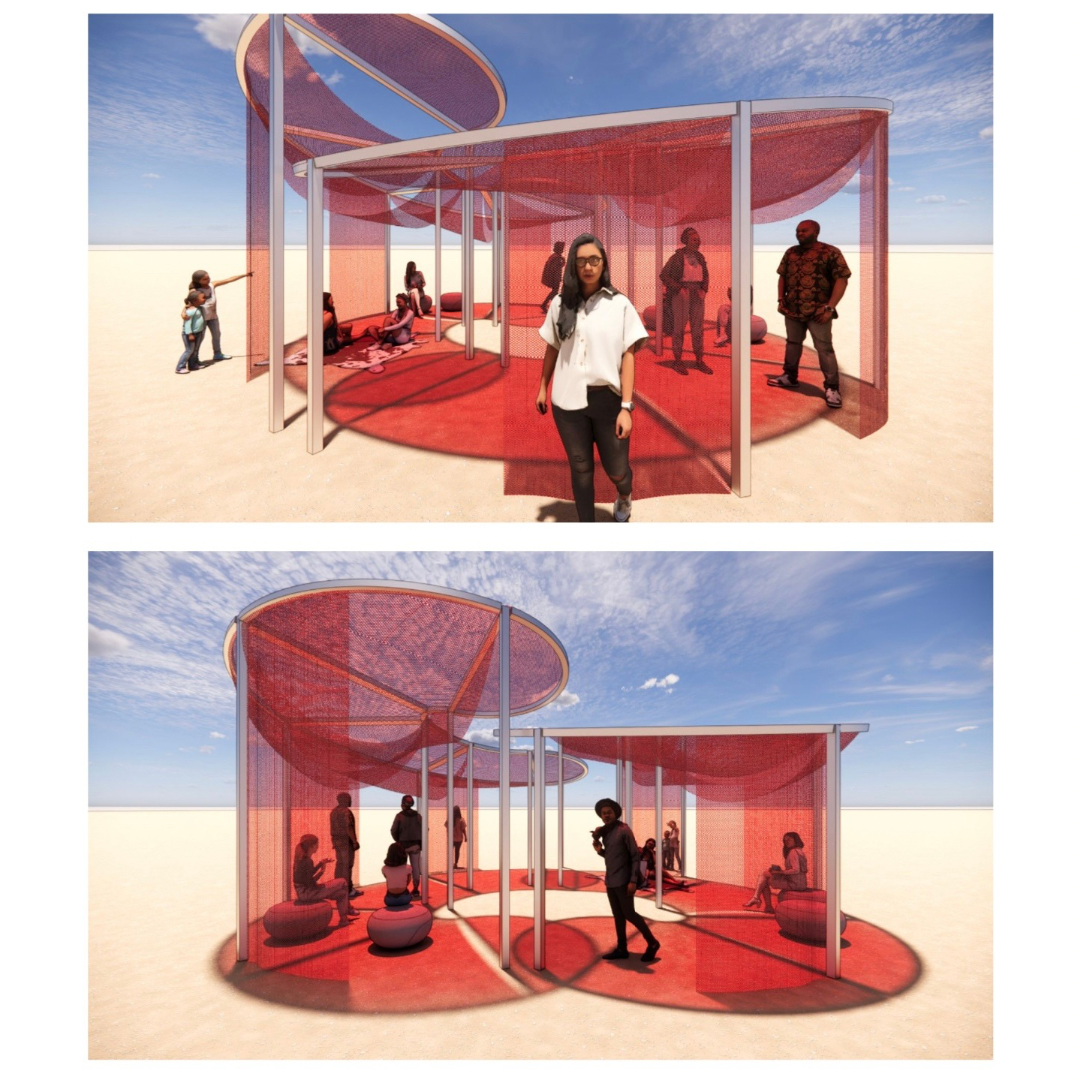
Courtesy of City of Phoenix

Audio By Carbonatix
The city of Phoenix is moving forward with an ambitious public art project, with artists beginning to plan nine shade structures that will provide artistic relief from Arizona’s searing summer.
The art project, “¡Sombra! Experiments in Shade,” is being funded by a grant from the Bloomberg Philanthropies’ Public Art Challenge, which seeks to finance public art in eight different cities across the United States that address civic issues with temporary art structures.
The $1 million grant is distributed to the artists with about $75,000 each for their projects, which range from textile shade covers inspired by “grandma’s quilts” to large-scale sculptures. The goal of the project, according to Carrie Brown, deputy director of the arts and culture staff for the city of Phoenix, is to allow artists to contribute ideas to civic issues.
“We’re hoping that we come away with some really creative solutions for creating shade and cooling in our town,” Brown says. “Our public art program has a long history of creating artist-designed shade structures. And so this is kind of an extension of that, allowing us to experiment with different methods and different materials and hopefully come away with some things that we can implement in a permanent fashion down the road.”
This year, make your gift count –
Invest in local news that matters.
Our work is funded by readers like you who make voluntary gifts because they value our work and want to see it continue. Make a contribution today to help us reach our $30,000 goal!
Artists working on “¡Sombra!” also hope that this project will pave the way for allowing artists a seat at the table for addressing civic issues. Kira Dominguez Hultgren, a weaving-based artist and assistant professor at the University of Illinois Urbana-Champaign, whose piece for “¡Sombra!” will involve traditional Mexican textiles, says that inviting artists to collaborate on civic projects can help to imagine new, creative solutions.
“It’s almost like bringing in the fiction writers for something that ultimately needs to be a nonfiction book at the end of the day,” she says.
Urban heat is a major problem for the city of Phoenix. Maricopa County saw over 400 heat-related deaths in 2024, according to the most recent data from the public health department, many of whom did not have consistent access to relief from the sun.
Shade infrastructure, such as the art pieces that the “¡Sombra!” project will create, is a major part of providing relief from the sun’s effects, according to Mary Wright, a built environment specialist for the city of Phoenix’s Office of Heat Response and Mitigation.
“Increasing shade in the city in places where people are is a major priority for us,” Wright says. “Research shows that shade is the most important physical variable outdoors to keep people safe, because it dramatically reduces the overall heat burden on the human body.”
Underserved communities tend to have less protection from the sun, according to Wright, primarily because they lack shade infrastructure – either built structures or shade canopies from trees. Because of this, these underserved areas tend to have higher surface temperatures, and with fewer resources allocated to them, the burden of hot summers weighs on them more heavily than neighborhoods with more financial access.
Certain demographics, such as homeless people, are also more at risk to the effects of extreme heat. Those who are vulnerable to the heat often have “higher physical sensitivity, more exposure and fewer resources to cope with the heat,” according to Wright – making access to shade all the important when the summer heat can become deadly.
The “¡Sombra!” project encourages artists not just to provide protection from the sun, but also to experiment and embrace new and inventive ways of incorporating heat relief into their art. The art pieces are intended to be temporary, and as per the rules of the grant from Bloomberg Philanthropies, they will come down and go back into the hands of the artists once the project is over, according to Brown. This gives artists more room to explore with materials and shapes.

Bobby Zokaites’ contribution will be flower-shaped structures in Cortez Park.
Courtesy of City of Phoenix
Bobby Zokaites, a sculptor who specializes in large-scale, colorful structures, said that the temporary nature of the project allows for much more creative experimentation. Because most public art has to withstand Arizona’s intense weather for years, it tends to require heavy, durable materials that can be expensive and difficult to work with.
“Aesthetically, we’re getting a lot of bang for the buck,” Zokaites says, “because when you do permanent projects, most of the time, they’re very heavy.”
Zokaites’ structure will involve several woven panels shaped like leaves, created by members of the community, suspended on a pergola structure bolted to a bridge in Cortez Park in West Phoenix. Those who weave the panels will have their choice of color for the material, leading to what Zokaites says will be a colorful, fun structure.
“That’s one of the magical things about art, is being able to take a very monotonous thing and shine a light on it,” Zokaites says. “You know, it’s akin to smelling the desert after it rains. There’s just like a slight change in your senses and how you perceive things and it causes this acknowledgment of beauty.”
Along with innovative materials and shapes, many of the artists are experimenting with what it means to provide relief from the sun, with art pieces reflecting on various themes from lost history to new uses of classic comfort items.
Luke Haynes, a trained architect and quilting artist, says that his piece will use fabric as a heat shield – from the other side. Blankets protect against the cold by trapping body heat, but Haynes’ project will use quilts to act as a shield against the sun, a reversed, but similarly effective, use of fabric.
“The only difference is a bit of distance,” Haynes says. “If you make a blanket and use it on your bed, it’s shielding the heat from leaving. In this case, you’re shielding the heat from making it down.”

Feng-Feng Yeh, a Tucson-based chef and artist, wants to use her art piece to share the stories of those who have lived through discriminatory practices.
Courtesy of City of Phoenix
Feng-Feng Yeh, a Tucson-based chef and artist who founded the Chinese Chorizo Project, which seeks to spread the story of the historic fusion food of Mexican and Chinese communities in Tucson, said that she wants to use her art piece for “¡Sombra!” to share the stories of those who have lived through discriminatory practices. Her project will incorporate Chinese shadow puppetry to highlight stories of redlining, the denial of financial services such as home loans to people who lived in certain neighborhoods, as well as showcase the solidarity between minority communities shown in her Chinese Chorizo Project.
“I’ll be collecting stories of people who lived in these neighborhoods near Eastlake Park and in the redline districts of Phoenix, and trying to lift up these stories that haven’t been told,” Yeh says. “Because when we’re able to relate to each other and tell each other’s stories, we’re able to see each other better, and help each other when we need help.”
A large part of the project is community engagement, according to Brown of the city’s arts and culture staff. The art pieces aren’t meant to just be looked at or stood underneath – they will help to educate viewers about the importance of shade and heat relief, and relate directly to the communities in which they go up with engaging opportunities.
Pieces will begin to go up around Phoenix starting early next year, and the project will culminate in September 2025, when a one-day festival in Steele Indian School Park will showcase all of the art pieces. After the festival, the sculptures will come down and be returned to the artists. But Brown and many of the artists hope that “¡Sombra!” will help pave the way for artists to be more engaged in civic projects.
“We are really interested in taking lessons learned and utilizing that into permanent installations,” Brown says.